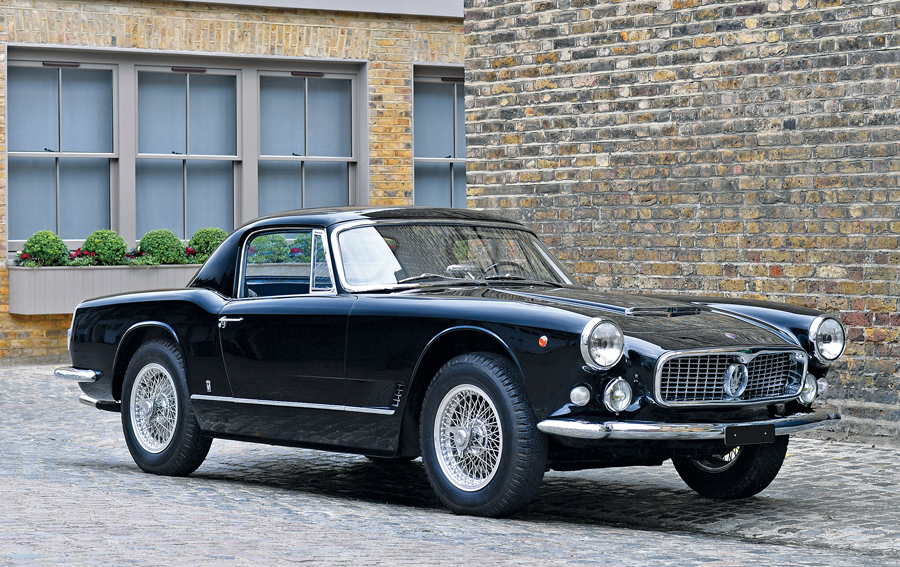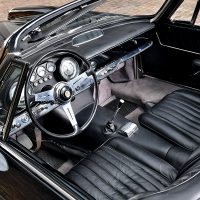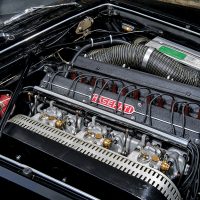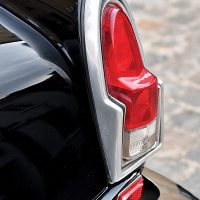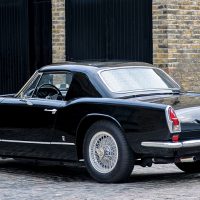SCM Analysis
Detailing
| Vehicle: | 1961 Maserati 3500 GT Vignale Spyder |
| Years Produced: | 1959–65 |
| Number Produced: | 242 |
| Original List Price: | $14,500 |
| SCM Valuation: | $740,500 |
| Tune Up Cost: | $1,750 |
| Chassis Number Location: | In engine compartment on firewall |
| Engine Number Location: | Stamped on side of block |
| Club Info: | Maserati Club International |
| Website: | http://www.maseratinet.com |
| Alternatives: | 1958–63 Aston Martin DB4 convertible, 1965–66 Ferrari 275 GTS, 1959–64 Lancia Flaminia GT Spider |
| Investment Grade: | B |
This car, Lot 171, sold for $528,750 (£410,000 £1=$1.28) including buyer’s premium, at RM Sotheby’s London, U.K., sale on October 24, 2019.
I welcomed this assignment when it came into my mailbox. First, because I love these Maserati spyders — or convertibles, as they were also called in factory brochures and advertisements, especially for the U.S. market. They are rare and beautiful, true exemplars of the “Dolce Vita” era — a time when Maserati found its feet as a manufacturer of high-quality, high-performance GT cars.
I also was excited because this sale was also a great example of how the market’s continued shift towards aligning with the fundamentals of collecting has become ever more evident. Today’s buyers look to the key components in each type and example of car to determine how much they are willing to spend for a purchase.
No matter how few of an item was made, few are immune to the realities of the fundamentals of collecting.
The best examples of this rare, beautiful and, most important, enjoyable-to-drive car, sold near and slightly above the $1 million mark up to two to five years ago. Now it appears that their market appeal has cooled a bit, with prices settled across all ranges of condition.
But as is ever the case, the spread between the very best and those that need an explanation grows wider. Let’s take a closer look at what matters in one of these cars.
Replacement engines no big deal — in period
As is the case with many performance cars of the 1950s, 1960s and into the 1970s, engines often suffered under early owners who sought to exploit their performance to the utmost — or from poor service maintenance at dealerships far from factory training. Despite today’s atmosphere of matching-numbers mania, in period it was easier and more desirable from all sides to replace a problem engine with a new one — found sitting on a shelf in a spares depot — rather than doing major surgery on an original damaged unit.
Certainly today if you had a problem with the powerplant of your 2019 Whizbang XLT5, you would not want the local dealer technician to replace the head, sump and pistons if you could instead receive a brand-new factory engine.
Chances are you wouldn’t be concerned about someone sitting at an auction in 2077 turning their nose up at your car as it crossed the block (or more likely appeared on the 3-D hologram display of an AppleAmazon iPhone 42 pro) because the engine had been replaced when it was a year old.
In period, it was the practice of the Maserati factory to supply unstamped engines as company replacements. It is not uncommon to come across 3500 GTs with such engines.
The description of this car, however, mentioned that in addition to having a color change, it also had an engine replacement. It was not done by a dealer in period but by an owner who was at least the fourth — if not farther along in the chain of possession — and that said engine, from a 3500 GT coupe he also owned, had later been restamped to match the number of the original unit.
Our subject car sold in February 2015 at Artcurial’s Rétromobile sale in Paris for €858,240, which was, at the time, $976,677. The replaced engine was mentioned in the Artcurial catalog, but it also stated that the original engine came with the car. There was no such notice in the RM Sotheby’s catalog.
A notice appeared in the auction catalog indicating that RM Sotheby’s had an ownership interest in the car. The car had also been listed for sale on the website of a major international dealer in the U.K. prior to the auction — and was listed as having been sold. I cannot state how that happened to be, but perhaps it was involved in a trade of some sort with another vehicle the company was offering by private-treaty sale.
In any event, it certainly could explain why the reserve was set at a level that enabled the car to sell. In the catalog, no pre-sale estimate was listed.
A parallel sale
In any case, I know of at least one 3500 GT Spyder which shared similar attributes of value with our subject car. This other car was privately purchased in 2017 and privately sold in 2019.
This car also has a color change and a replacement engine, although it was a correct unstamped factory block. The car had a shorter and complete ownership history. The owner paid in the $800k range in 2017 and sold it to a dealer at a wholesale price in the $500k range in 2019. This sits almost exactly parallel with our subject car in the current market.
A great, fun car sold well
However, given the details of the engine change but also accounting for the very visually appealing black-on-black livery resulting from the color change, in my view our subject car was well sold given its history and collection of value attributes.
Nevertheless, once the driver is behind the wheel, turns the key and drives off, our subject car will do what every other more-original example does, which is provide a delightful driving experience.
In this market it’s all about choice — why you buy determines what you pay, and that’s a good thing. ♦
(Introductory description courtesy of RM Sotheby’s.)
